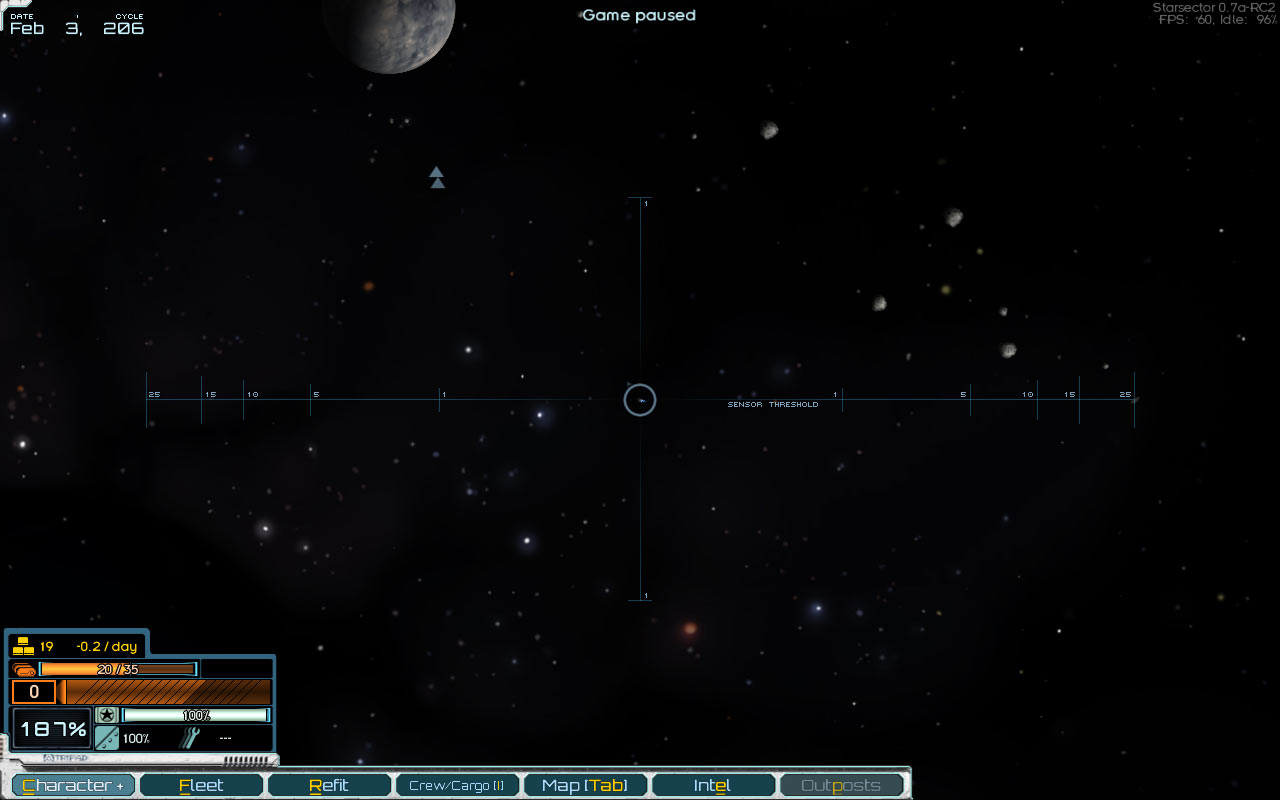In a previous post, I’d talked about combat readiness. One of the benefits of that system is that it makes it easy for other mechanics to tie into it, whether they’re in the combat or the campaign layer. I’d like to talk about what’s more or less an overhaul of the various fleet management mechanics, both fixing some long-standing issues and streamlining the approach without oversimplifying it. First, though, a brief recap of how things currently work.
The player character has a “fleet points” stat that determines the maximum size of their fleet. (So do the AI fleet commanders, but never mind that for the moment.) The fleet has a cargo, fuel, and personnel capacity, based on the stats of the ships in it.
These are all soft caps – you can go over them, but doing so costs extra supplies every day, and there’s a risk of accidents when any of these is exceeded by too much.
Overall, this works well; there’s no reason to throw out the system and start from scratch. I’d actually started writing out the issues with the current system, but since it does work fairly well, it’s hard to build a compelling case against it. So instead, let me outline the new approach, and point out how it’s better.
Logistics
The general idea is to replace fleet points with something based on supply consumption, and since supply consumption already plays a role in other places, it can all be rolled together to clean things up. Enter the new stat, “logistics”. It’s a measure of how many units of supplies per day your character can manage to distribute efficiently. So, supply consumption up that limit is fine, but going above it introduces penalties.
The things that consume supplies are:
- Ship maintenance – ships have a new stats that indicates how many supplies per day they require for maintenance. More on that later.
- Crew and marines; marines consume more to reflect the cost of keeping those armored suits in good repair
- Ship repairs
- Combat readiness (“CR”) recovery
- Being over-capacity in fuel, cargo, or personnel – a fixed supply cost per unit
The daily supply expenditure on all of that is added up, and together with the logistics stat, is used to produce a logistics rating (“LR”), which is a percentage value. Use up to the logistics value results in an LR of 100%, and it goes to 0% when supply use double the logistics value. For example, if your logistics stat is 50, and you’re using 75 supplies per day, the LR is 50%.
LR has the following effects:
- When below 100%, reduces the maximum combat readiness of all the ships in the fleet by up to 50% (at 0% LR)
- When at 0% for more than a day, there’s a chance of an accident happening (note that simply being way over capacity in something is not enough to cause one now)
Read the rest of this entry »


























